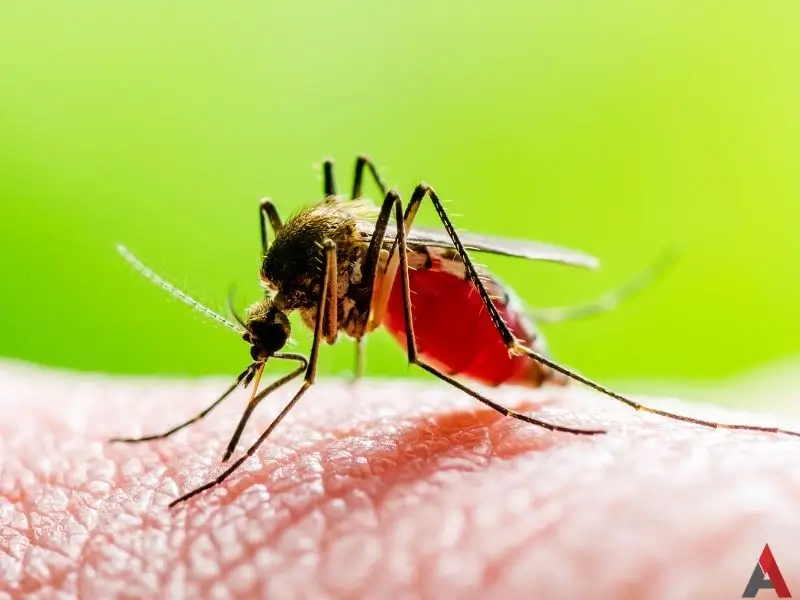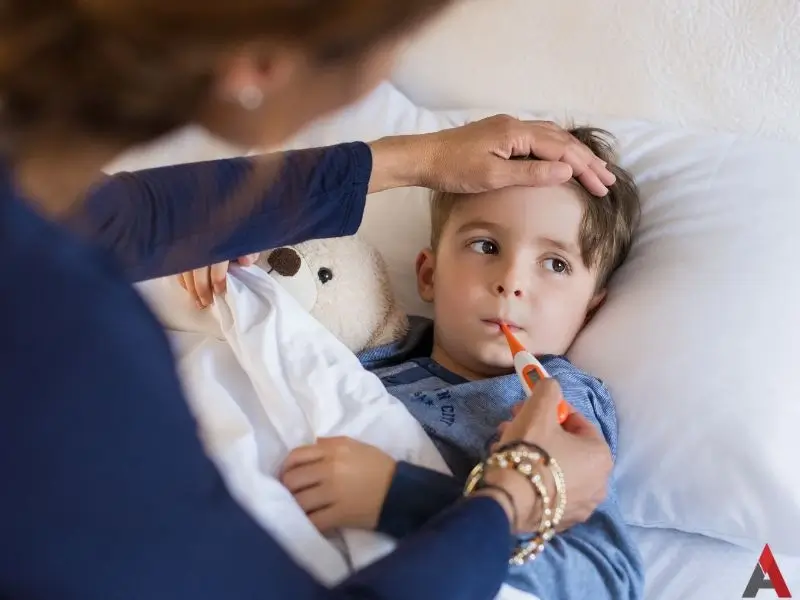
Yellow Fever Mosquito Identification Guide
Table of Contents
What is the Yellow Fever Mosquito?
Overview of Aedes aegypti
The Yellow Fever Mosquito, scientifically known as Aedes aegypti, is one of the most widespread mosquito species known for transmitting several dangerous viruses. Native to Africa, this mosquito has spread globally, particularly thriving in warmer climates and urban environments.
Why This Mosquito is a Concern
Aedes aegypti is not just a nuisance—it's a public health threat. Unlike many other mosquito species, it prefers feeding on humans and is highly effective at spreading viruses such as Yellow Fever, Dengue, Zika, and Chikungunya. Understanding how to identify and manage this mosquito is critical for protecting your family and community.
Common Locations & Habitats

This species thrives in tropical and subtropical climates, particularly in densely populated urban and suburban areas. It commonly breeds in artificial containers like tires, flowerpots, and birdbaths, making residential areas a prime habitat.
These urban domestic habitats have become adaptable environments for Aedes aegypti, allowing them to thrive in various artificial containers such as vases, water tanks, and tyres.
What is Yellow Fever?
Yellow fever is a viral disease caused by the bite of an infected mosquito. This mosquito species is notorious for transmitting several dangerous viruses, and yellow fever is one of the most severe. The disease is a significant public health concern, particularly in tropical and subtropical regions of Africa and South America.
Yellow fever can present a range of symptoms, from mild fever and chills to severe illness involving jaundice, internal bleeding, and organ failure.
How to Identify a Yellow Fever Mosquito
Physical Characteristics
Aedes aegypti has several distinguishing features that set it apart from other common mosquito species. It has a small, dark-colored body with a sleek appearance, often described as almost jet black. What makes it especially easy to identify is the distinctive white, lyre-shaped marking on its thorax—a harp-like pattern that’s unique to this species.
Its legs are marked with white bands, giving it a striking black-and-white contrast that’s visible even to the naked eye if observed closely. These unique physical traits make Aedes aegypti more recognizable than many of its mosquito relatives, which tend to be duller in color and less patterned.
Size & Appearance Compared to Other Mosquitoes
In terms of size, the Yellow Fever Mosquito is relatively small—typically measuring only about 4 to 7 millimeters in length. While its petite frame can make it harder to spot at first glance, it more than makes up for it with its bold black-and-white coloration and sharply defined markings, which are unlike the more uniformly brown or gray appearance of many other mosquito species.
Its wings are narrow and clear, and when resting, it holds its body at a distinctive angle, which can also help in identification. Despite its small size, Aedes aegypti is one of the most dangerous mosquitoes due to its close proximity to humans and its preference for human blood, making accurate identification all
Behavior & Habitat
Where They Breed & Live
The Yellow Fever Mosquito (Aedes aegypti) thrives in urban and suburban environments, particularly in areas where people live and work. These mosquitoes are highly adaptable and have evolved to take advantage of the human-made world.
They often breed in close proximity to human activity, preferring artificial containers that collect and hold standing water. Common breeding sites include flowerpots, birdbaths, pet bowls, tires, buckets, trash can lids, and even bottle caps. They are also found around clogged gutters, drainage ditches, and other areas where water can pool unnoticed.
Active Times & Feeding Habits
Unlike many other mosquito species that are most active at dawn or dusk, Yellow Fever Mosquitoes are primarily active during daylight hours, with peak biting times occurring in the early morning and late afternoon. This daytime activity pattern increases the risk of human contact, especially for people who spend time outdoors during these hours.
Aedes aegypti is known for being an aggressive biter, often feeding multiple times in a single cycle to obtain the nutrients needed to produce eggs. These mosquitoes tend to target people in shaded or semi-protected outdoor areas, such as patios, garages, or under dense vegetation.
Areas Affected by Yellow Fever
Yellow fever is endemic in tropical areas of Africa and Central and South America. These regions are particularly vulnerable due to the high density of Aedes aegypti mosquitoes and the presence of large, densely populated urban areas.
Large epidemics of yellow fever occur when infected individuals introduce the virus into these heavily populated areas, where most people have little or no immunity due to lack of vaccination. This can lead to rapid and widespread outbreaks, making yellow fever a significant public health challenge in these tropical regions.
Diseases They Can Transmit
The Aedes aegypti mosquito is more than just a nuisance—it's a primary vector for transmitting several dangerous viral diseases. These illnesses can lead to severe health complications and, in some cases, death.
Yellow Fever
Yellow Fever
Yellow fever is a viral hemorrhagic disease transmitted primarily by the Aedes aegypti mosquito, with symptoms ranging from fever and muscle pain to severe complications like jaundice, internal bleeding, and organ failure. Yellow fever transmission occurs when an infected mosquito bites a human, making yellow fever spread especially dangerous in densely populated urban areas. Urban yellow fever poses a major public health threat, as it spreads rapidly through infected mosquitoes in regions with poor mosquito control. Diagnosing the disease early is challenging due to its flu-like symptoms. In some cases, patients enter a toxic phase marked by liver and kidney failure, often with fatal outcomes. Fortunately, yellow fever is preventable with a highly effective vaccine that provides lifelong immunity for most people. Increasing vaccination rates is key to reducing yellow fever transmission and controlling yellow fever spread in vulnerable regions.
Dengue Fever
Dengue is one of the most common mosquito-borne viral infections, especially in urban and semi-urban areas. It causes high fever, intense headaches, pain behind the eyes, severe joint and muscle pain (earning it the nickname “breakbone fever”), and skin rash.
Zika Virus
The Zika virus is particularly dangerous for pregnant women, as infection during pregnancy can cause serious birth defects, most notably microcephaly—a condition where a baby’s head is significantly smaller than expected, often leading to developmental issues.
Chikungunya Virus
Chikungunya causes symptoms that overlap with those of dengue and Zika, including fever, rash, and muscle pain. However, it is most noted for its debilitating joint pain, which can persist for weeks or even months after the initial infection.
Symptoms of Mosquito-Borne Illnesses
Mosquito-borne diseases transmitted by Aedes aegypti—such as dengue, Zika, chikungunya, and yellow fever—can cause a wide range of symptoms, depending on the virus and the individual’s health.
Common symptoms include:

- High Fever: Sudden-onset fever is often the first and most noticeable symptom. It can be extremely high, especially in dengue and chikungunya, sometimes exceeding 104°F (40°C), and may last several days.
- Headache and Muscle Aches: Intense headaches, often centered behind the eyes, are common, and tend to be one of the initial symptoms. Muscle aches may be widespread, contributing to overall fatigue and discomfort. In some diseases like chikungunya, muscle and joint pain can linger for weeks or even months.
- Rash: Many mosquito-borne illnesses, particularly Zika and dengue, cause skin rashes. These may appear as small red spots or more widespread inflammation and often accompany fever. Rashes can appear during or after the fever subsides.
- Nausea or Vomiting: Digestive symptoms such as nausea, vomiting, and abdominal pain can also occur. These symptoms are often overlooked but can signal a more serious progression, particularly in cases of severe dengue.
- Joint or Eye Pain: Joint pain is a hallmark of chikungunya, where it may become debilitating and persist long-term. Zika, on the other hand, is known to cause conjunctivitis (pink eye), along with other flu-like symptoms, which can help distinguish it from similar illnesses.
How These Diseases Spread
The cycle of transmission works like this:
- A mosquito bites an infected person who is currently carrying the virus in their bloodstream.
- The virus incubates inside the mosquito for several days, during which it multiplies and migrates to the mosquito’s salivary glands.
- When the mosquito bites another person, the virus is injected into their bloodstream, initiating a new infectious disease.
Prevention & Control Methods
Controlling the spread of mosquito-borne illnesses starts at home. Since Aedes aegypti mosquitoes thrive in urban and residential areas, proactive steps to reduce their population and prevent bites are crucial.
Public health strategies for disease prevention, as emphasized by organizations like the World Health Organization and the Pan American Health Organization, play a vital role in controlling mosquito-borne diseases. Here’s how you can protect your household and community.
How to Reduce Mosquito Populations Around Your Home
To help prevent yellow fever transmission, eliminate mosquito breeding sites by removing stagnant water from containers like flowerpot trays, birdbaths, buckets, and old tires. Even small amounts of water can support Aedes aegypti larvae, so inspect your yard regularly—especially after rain. Keep gutters and drains clear to avoid hidden standing water that can lead to yellow fever spread. For areas where water can’t be emptied, such as rain barrels or ponds, use mosquito dunks or larvicides. These are safe for pets and wildlife but effectively stop mosquito larvae from maturing.
Personal Protection Tips
In addition to reducing mosquito populations, taking personal precautions is essential to avoid mosquito bites and reduce yellow fever transmission. Applying EPA-registered insect repellents with DEET, picaridin, or oil of lemon eucalyptus to exposed skin and clothing is highly effective. Travelers to yellow fever-affected areas should combine repellents with protective clothing for added safety. To prevent yellow fever spread indoors, install or repair window and door screens, and use mosquito nets in unscreened or open-air sleeping areas. Aedes aegypti mosquitoes are most active during the day, especially at dawn and dusk, so limiting outdoor activity during these times can lower the risk of bites.
Yellow Fever Vaccination
The yellow fever vaccine is the most effective way to prevent yellow fever. It provides effective immunity within 10 days for 80-100% of people vaccinated, and within 30 days for more than 99% of people vaccinated. For travelers heading to areas where yellow fever is present, vaccination is essential. The vaccine not only protects individuals but also helps prevent the spread of yellow fever in endemic regions. Increasing vaccination coverage is crucial for controlling and eventually eliminating yellow fever epidemics, making the vaccine a cornerstone of public health efforts in affected areas.
Professional Mosquito Control Solutions
For comprehensive and long-lasting protection, professional mosquito control services offer effective solutions tailored to your property. A-1 Pest Control provides routine inspections to identify mosquito breeding sites and areas of high activity. For comprehensive protection, A-1 Pest Control offers:
- Routine inspections and targeted treatments to eliminate breeding areas
- Yard barrier sprays that kill adult mosquitoes and deter future activity
- Mosquito traps and eco-friendly biological control methods, customized for your property

